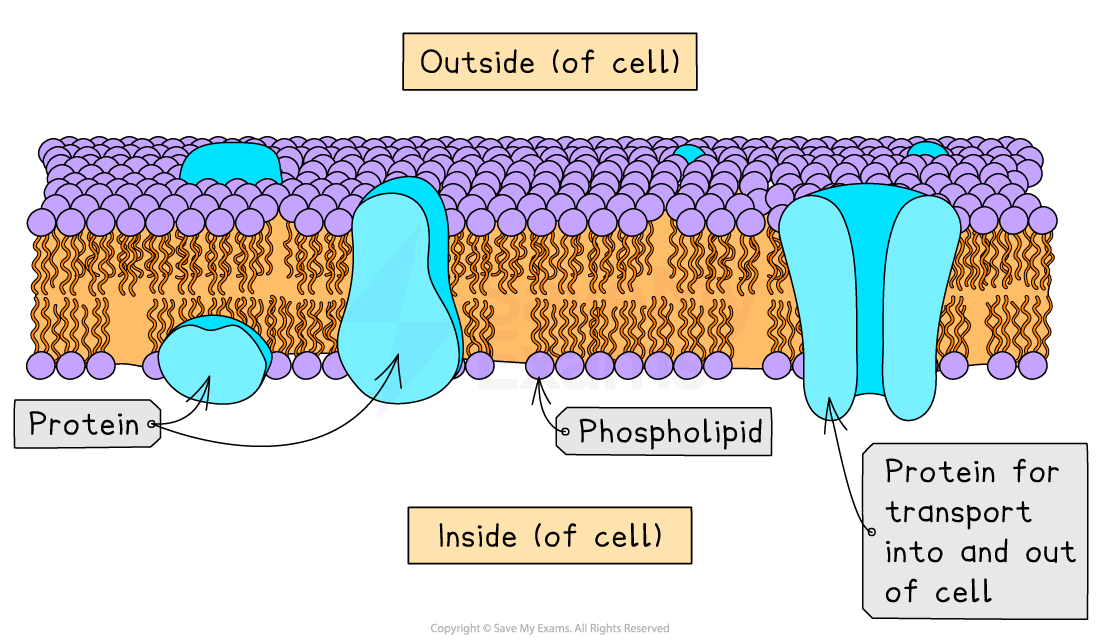The Cell Membrane (SQA National 5 Biology): Revision Note
Exam code: X807 75
Cell membrane structure & function
Cell membranes are the thin boundaries that:
surround cells, separating the cell contents from the external environment
separate compartments within cells from the surrounding cytoplasm, e.g. nucleus, mitochondria and chloroplasts
Cell membrane structure includes:
phospholipids
proteins
Cell membranes are selectively permeable, meaning that they allow the passage of some substances and not others
Small molecules, such as water, carbon dioxide and oxygen, can pass freely across the cell membrane
Larger molecules, such as glucose and proteins, as well as charged particles, including sodium and chloride ions (Na+, Cl-), require specialised transport proteins to move across membranes


Unlock more, it's free!
Did this page help you?